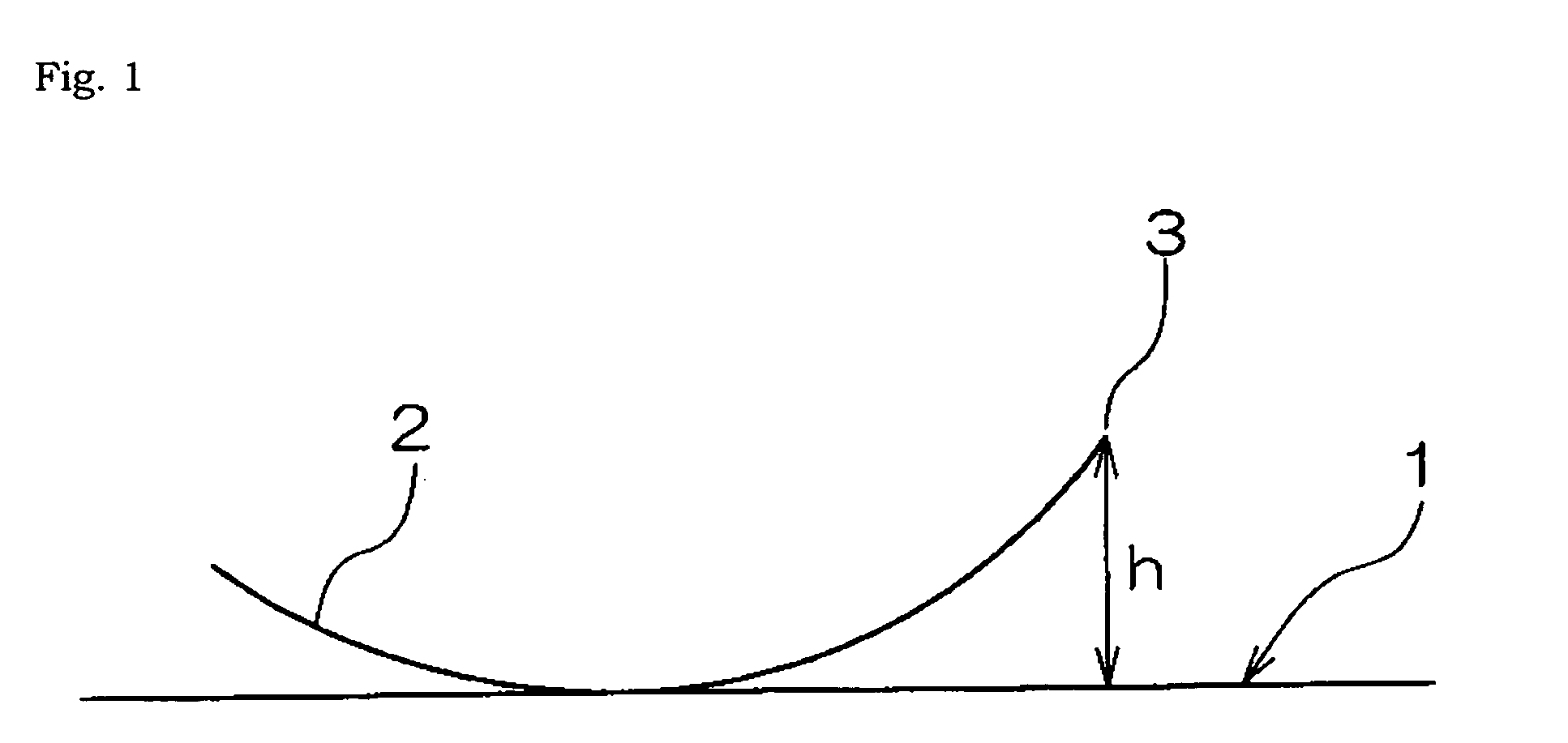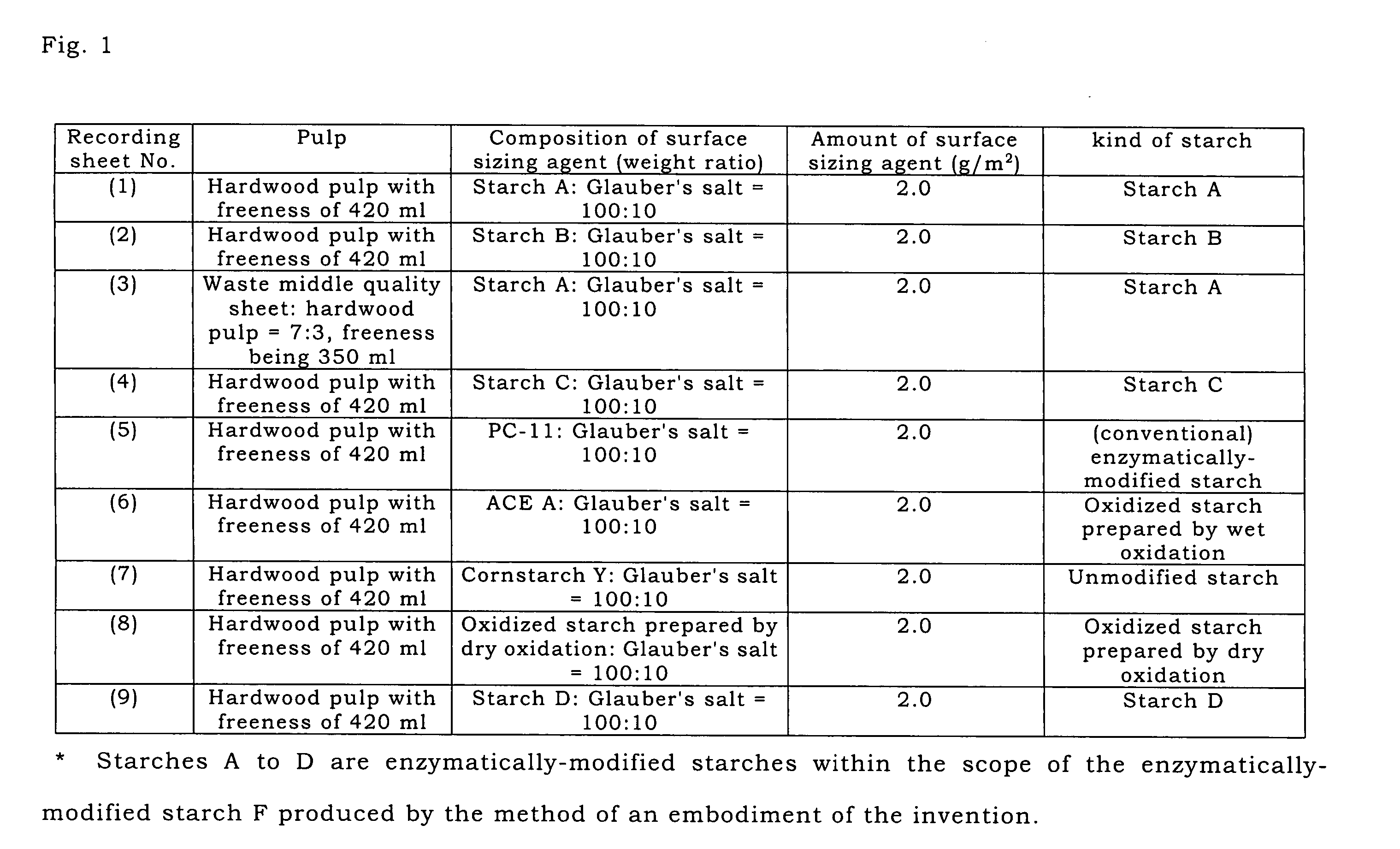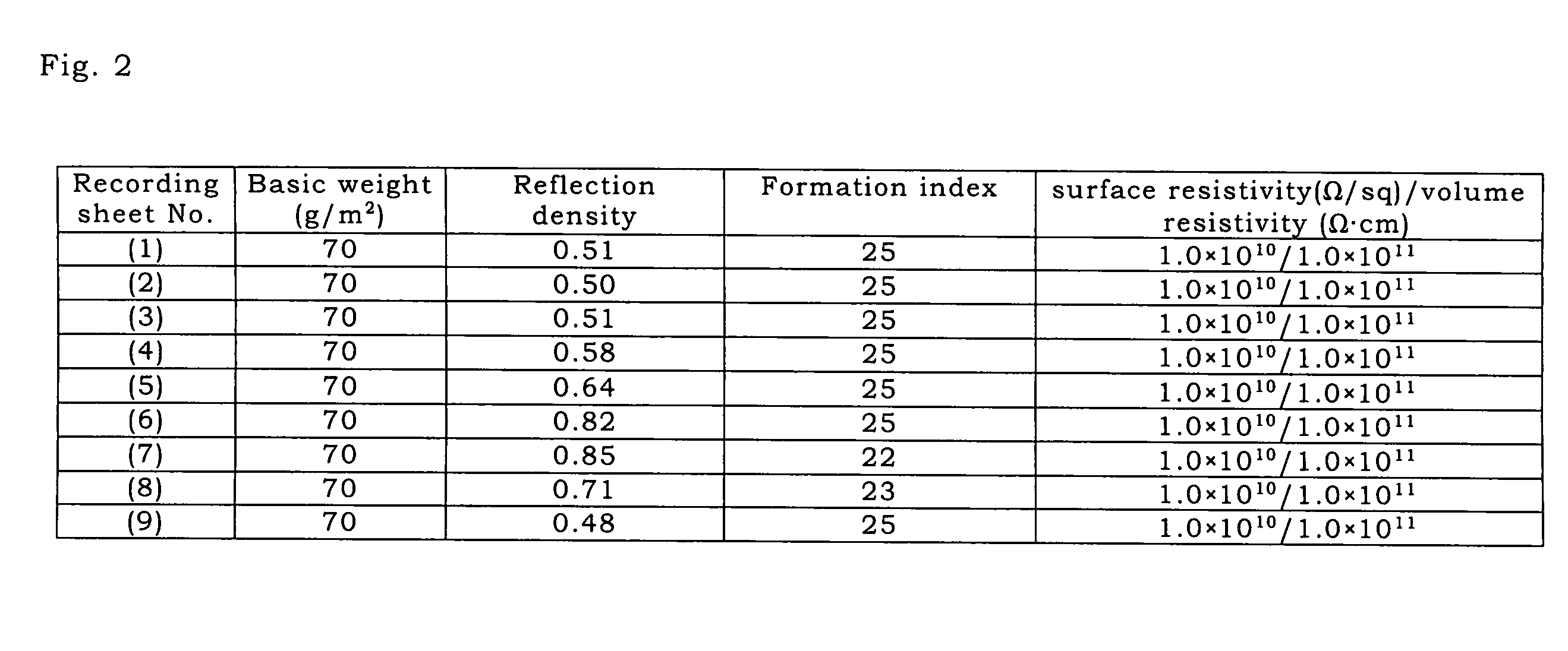Recording sheets and image forming method using the recording sheets
a technology of recording sheets and recording sheets, which is applied in the field of recording sheets, electrophotographic and inkjet image forming methods using recording sheets. it can solve problems such as paper curls, paper jamming at paper ejection sections, and accumulation of defects on the catch tray
- Summary
- Abstract
- Description
- Claims
- Application Information
AI Technical Summary
Problems solved by technology
Method used
Image
Examples
first embodiment
Recording sheet
[0043] In a first embodiment, the invention provides a recording sheet obtained by coating a base paper including pulp with a surface sizing agent including a starch as a main component, wherein when the recording sheet is left in a condition of 23° C. 50% RH for 5 hours and then the surface of the recording medium is provided with a povidone-iodine liquid having a povidone-iodine concentration of 70 mg / ml and an effective iodine content of 7 mg / ml in an amount of 10 ml / m2 and then the recording sheet is left in a condition of 23° C. and 50% RH for 5 hours, the reflection density of the surface provided with the povidone-iodine liquid is 0.60 or lower.
[0044] When image recording is conducted by electrophotographic or ink-jet copy machines or printers using the recording sheet of the first embodiment, the curl can be suppressed.
[0045] The reflection density is an index expressing the coloring degree of the region on the surface of a recording sheet, the region bein...
second embodiment
Recording Sheet
[0110] In a second embodiment, the invention provides a recording sheet. The recording sheet is a plain paper including a base paper including a pulp fiber and a filler as main components, wherein the plain paper does not have a coated layer including pigments and the plain paper has been coated with a processing liquid including a starch. The recording sheet is such a recording sheet that when 0.06 m2 of the recording sheet is subjected to hot water extraction, the solid amount of the extract is 0.01 to 0.4 g and the carboxyl group content in the solid is 0 to 5 meq / 100 g.
[0111] In an embodiment, the processing liquid includes a di- or higher-valent metal salt, and in a condition of 23° C. 50% RH, the recording sheet has a ratio of surface electric resistivity to volume electric resistivity in the range of 0.1 to 1, a surface electric resistivity of 1.0×109 to 1.0×1011 Ω / sq, and a volume electric resistivity of 5.0×109 to 5.0×1011 Ω·cm.
[0112] The recording sheet ...
example 1
Preparation of Recording Sheet
(Recording Sheet 1)
[0172] Dry pulp made of hardwood kraft pulp is defiberized and subjected to refining such that the freeness becomes 420 ml. Then, a pulp dispersion liquid is prepared such that the pulp solid content is 0.3% by mass.
[0173] To the pulp dispersion liquid containing 100 parts by mass of pulp solid, 0.3 part by mass of anhydrous succinic acid (ASA) internal sizing agent (FIBRAN-81, manufactured by Nippon NSC, Ltd.) and 0.5 part by mass of a cationized starch (CATO-304, manufactured by Nippon NSC, Ltd.) are added. The mixture is subjected to papermaking with 80 mesh wire by an fiber-orienting paper machine for experiment use manufactured by Kumagai Riki Kogyo Co., Ltd. (K. K.) in the following condition: papermaking speed: 1000 m / min and paper discharge pressure: 1.5 kg / cm2.
[0174] Thereafter, this set is pressed under a pressure of 10 kg / cm2 for 3 minutes by an rectangular press for paper machine manufactured by Kumagai Riki Kogyo Co...
PUM
| Property | Measurement | Unit |
|---|---|---|
| concentration | aaaaa | aaaaa |
| concentration | aaaaa | aaaaa |
| RH | aaaaa | aaaaa |
Abstract
Description
Claims
Application Information
 Login to View More
Login to View More - R&D
- Intellectual Property
- Life Sciences
- Materials
- Tech Scout
- Unparalleled Data Quality
- Higher Quality Content
- 60% Fewer Hallucinations
Browse by: Latest US Patents, China's latest patents, Technical Efficacy Thesaurus, Application Domain, Technology Topic, Popular Technical Reports.
© 2025 PatSnap. All rights reserved.Legal|Privacy policy|Modern Slavery Act Transparency Statement|Sitemap|About US| Contact US: help@patsnap.com



